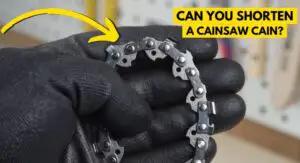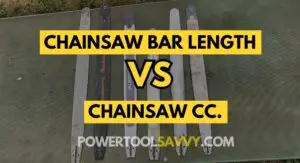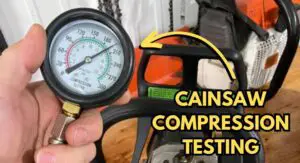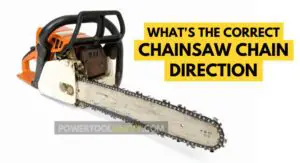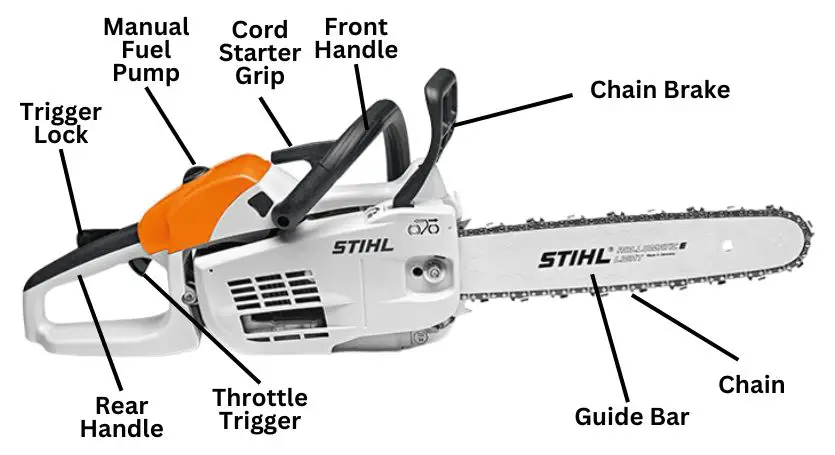
While a chainsaw may appear simple, it’s a complicated machine composed of several parts that operate together.
And trust me, knowing the ins and outs of your chainsaw will make a huge difference in how you use it.
Btw, I’m Sam and I have over two decades of experience using chainsaws, so I’ll be your guide as we explore the components of this powerful tool.
(I’ll try my best to not bore you with technical jargon!)
So, let’s get started!
Table of Contents
TogglePull Starter Grip
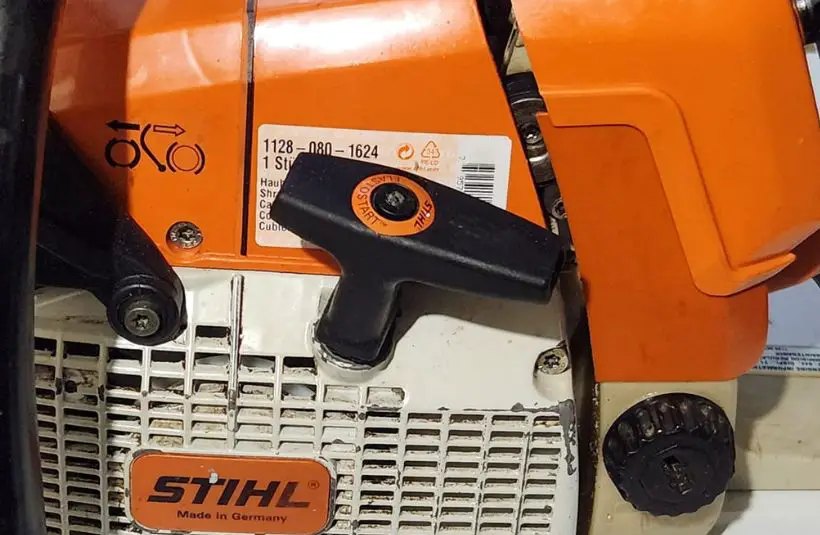
The first one on the list is obviously the pull starter grip which is used to start the chainsaw.
The grip is basically a handle that you pull with your hand to start the engine. It has a recoil spring inside which helps in pulling back the starter cord after starting the engine.
Also, there are some people like me who use it to test the engine compression. YES, the resistance you feel when pulling the cord indicates how good your saw’s engine compression is.
Throttle Trigger & Trigger Lockout
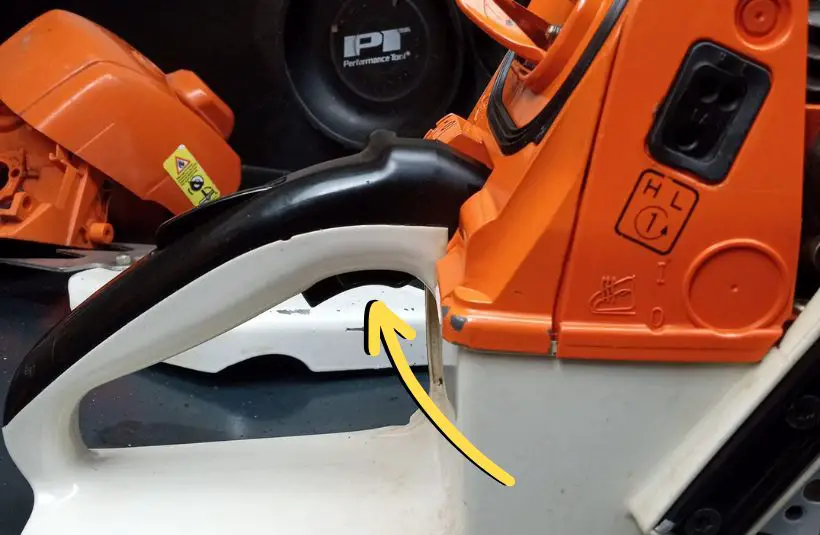
The black trigger below the handle you see in this image is the throttle trigger. As you’ve already guessed, this controls how much gas reaches the chainsaw’s engine.
When you pull it, the engine revs up, increases power, and the chain starts to rotate.
But to keep things safe, there’s a lock right behind it. You have to press this lock for the throttle to work (just in case your finger accidentally comes off the trigger while you’re using it).
Choke
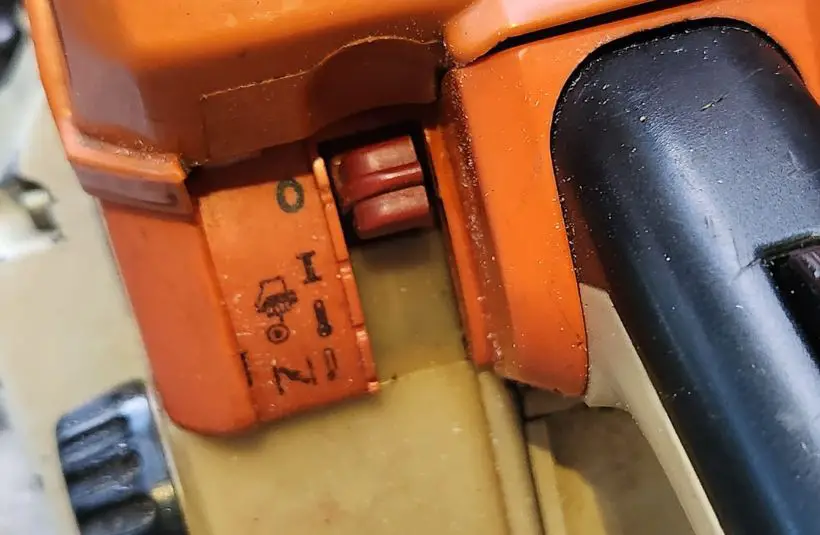
The choke in a chainsaw is used to help start the engine on cold days or after long periods of non-use. It delivers a richer fuel mixture (more gas to air) to the engine, allowing it to start more easily.
Muffler
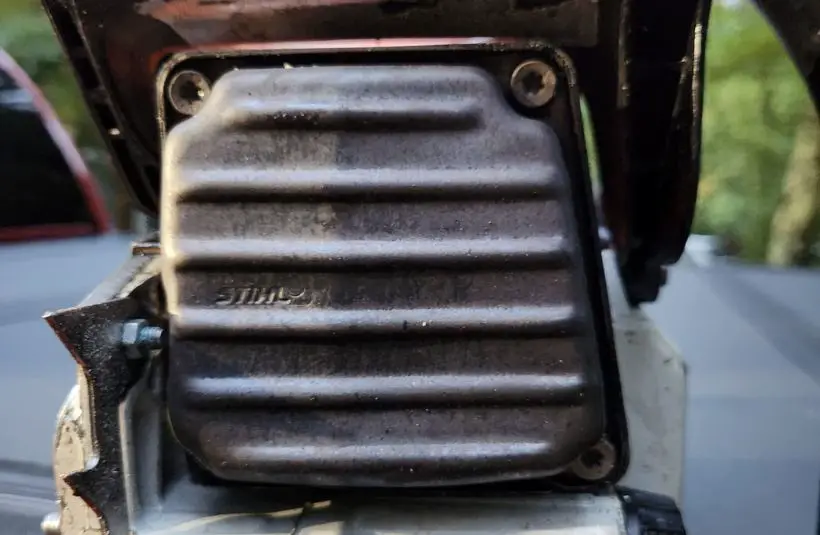
If you’ve ever wondered what that big box-shaped thing on the side of your chainsaw is, it’s most likely the muffler.
Its main function is to reduce noise produced by the engine and control exhaust emissions. It does this by using a series of chambers and baffles inside to muffle the sound as well as help to direct the exhaust gases into a designated outlet.
Air Filter
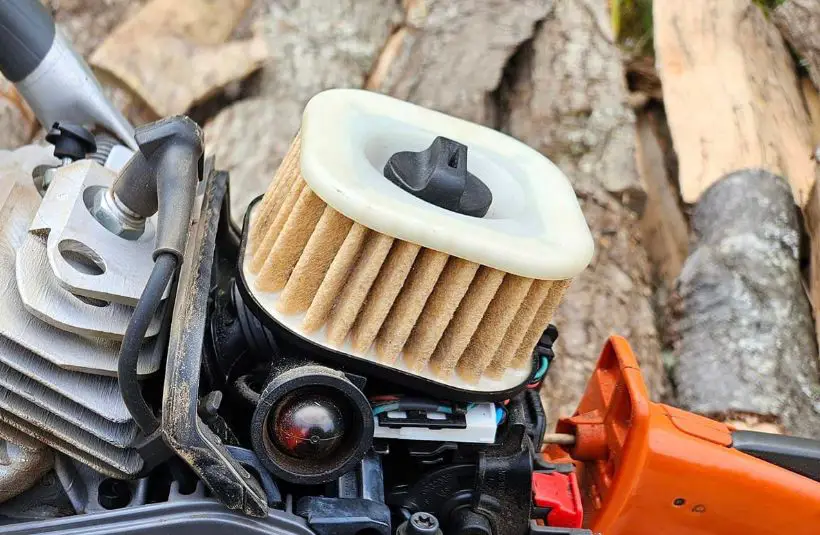
If you open the top cover of your chainsaw, the first thing you’re most likely to notice is the air filter.
As the name suggests, the purpose of the air filter is to prevent dust and debris from entering the carburetor and combustion chamber.
You need to keep it clean and replace it when necessary for the BEST performance!
Chain Catcher
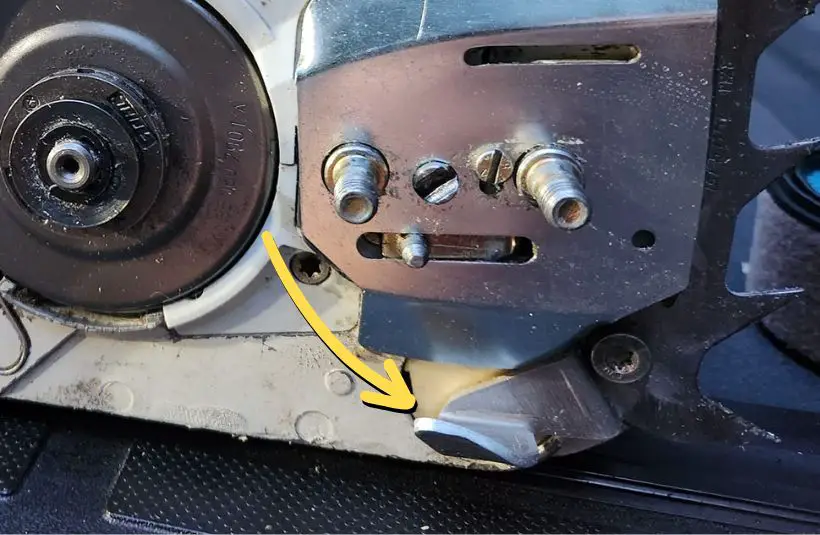
The chain catcher is a safety feature in chainsaws. It’s designed to prevent the chain from flying back toward the operator in case it breaks or derails.
It’s usually located under the bar mounting plate and is shaped like a hook to catch the chain.
Btw, if your chain keeps coming off of the bar, check out this where I’ve shown how to fix it.
Bumper Spike
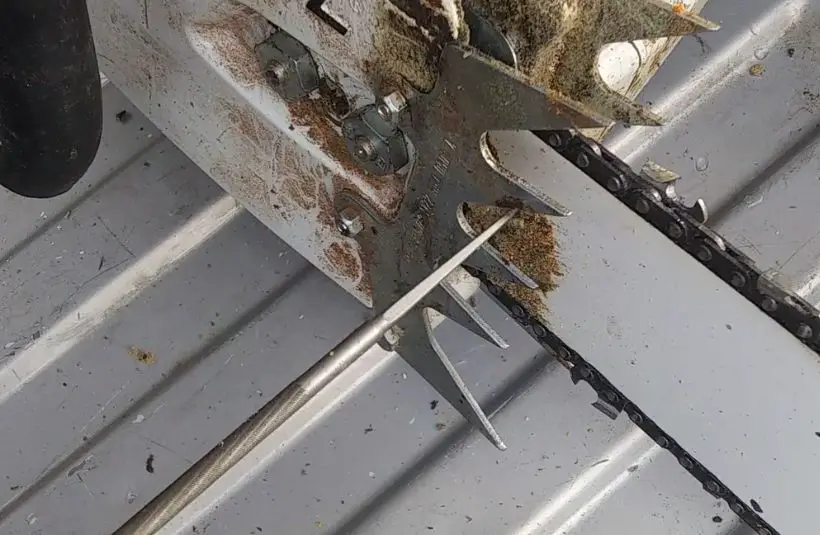
Have you ever wondered why chainsaws have those sharp metal spikes on the side?
You’re not alone!
I used to think it was just for aesthetics, but I found out that those are actually called bumper spikes and they serve an important purpose.
They provide leverage and stability when you’re cutting (especially on larger trees or when performing a buck cut). They also act as a pivot point, helping you control the saw better.
Fuel Tank & Oil Tank
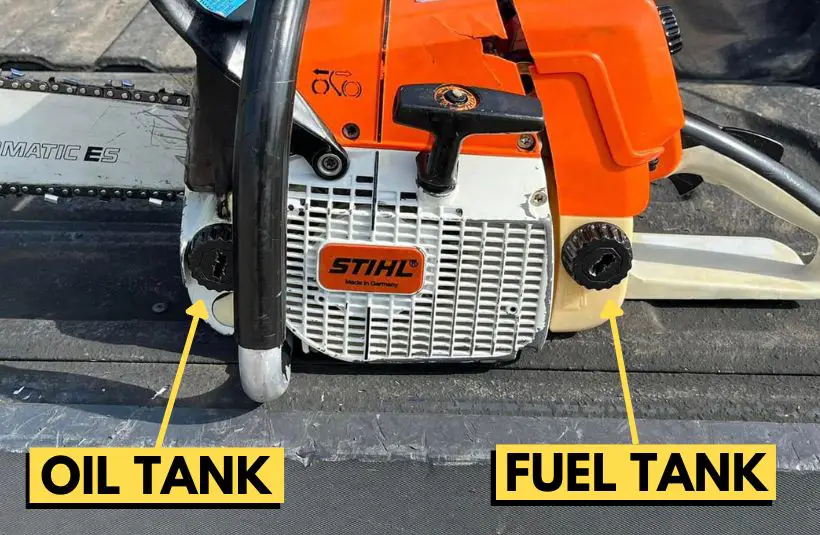
Don’t get confused between these two.
The fuel tank contains the oil and gasoline mixture that powers the engine. It’s located near the rear handle.
On the other hand, the oil tank holds bar & chain oil which lubricates the chain and bar during operation. It’s usually located near the front handle (chain brake).
Btw, if your chainsaw isn’t oiling, check out this article where I’ve shown how you can fix it!
Chain Sprocket

The chain sprocket is a small gear that connects the engine to the chain, allowing it to rotate.
And there are mainly two types of sprockets:
- Rim sprocket (the one you just saw in the image above).
- Spur sprocket (check the image below).
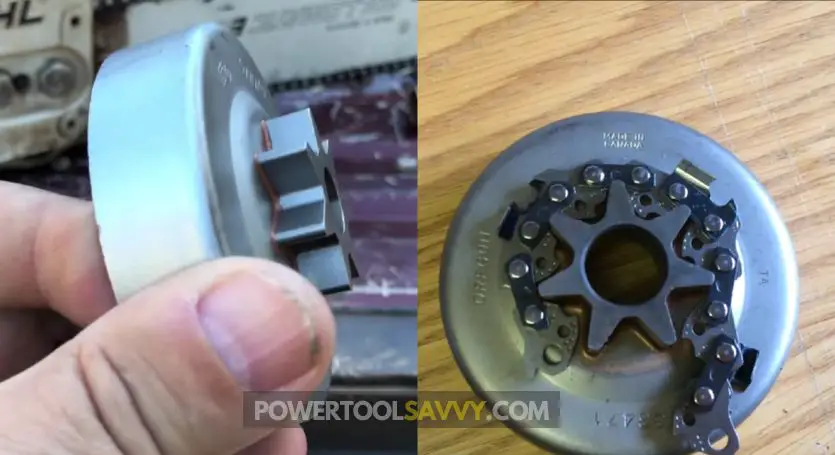
Both of them are GOOD but I personally prefer rim sprockets because they last a bit longer and are easier to replace.
Read this article where I’ve explained when & how to replace the chain sprocket.
Guide Bar
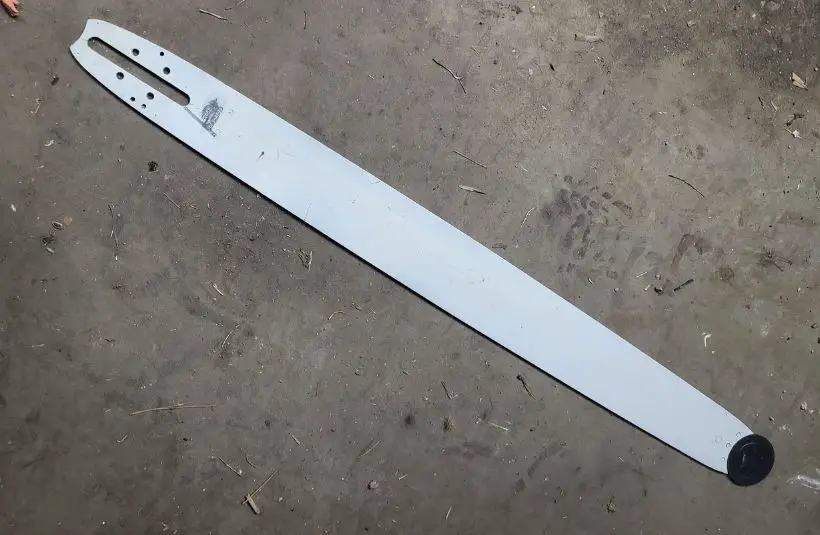
The guide bar (also known as the “blade”) is where the chain wraps around. It’s the long metal piece that extends from the power head and holds the chain in place.
The size of the guide bar will determine how big of a tree or log you can cut through, as well as how precise your cuts will be.
But how long of a guide bar you can put on your chainsaw depends on the power rating (cc) of your saw.
Read this article for a detailed guide on how to choose the right size chainsaw bar for your saw.
Chain
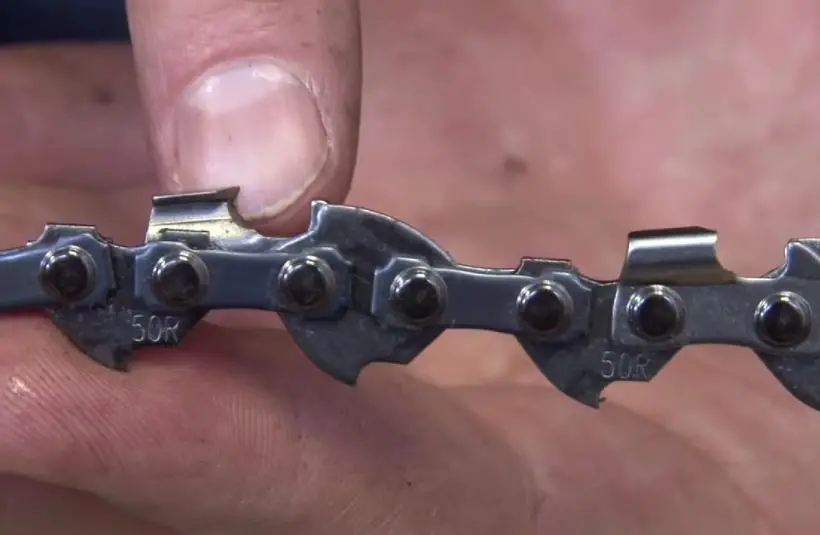
The chain is probably the easiest part to identify on a chainsaw. It’s essentially a series of connected metal teeth that spin around the guide bar, cutting through wood as it rotates.
And if you look closely, there are five parts to a chain:
- Cutter teeth (the sharp, curved part)
- Drive links (the bottom teeth that ride in the bar groove)
- Tie straps (connect the drive links to the cutter teeth)
- Rivets (hold the chain together)
- Depth gauge (also known as “raker”. It controls how deep the cutter teeth go into the wood)
However, chainsaw chains are not universal. To get the right chain for your chainsaw, you need to know two more things:
- The chain pitch (distance between the drive links divided by 2).
- The chain gauge (thickness of the drive links).
Front Handle & Chain Brake
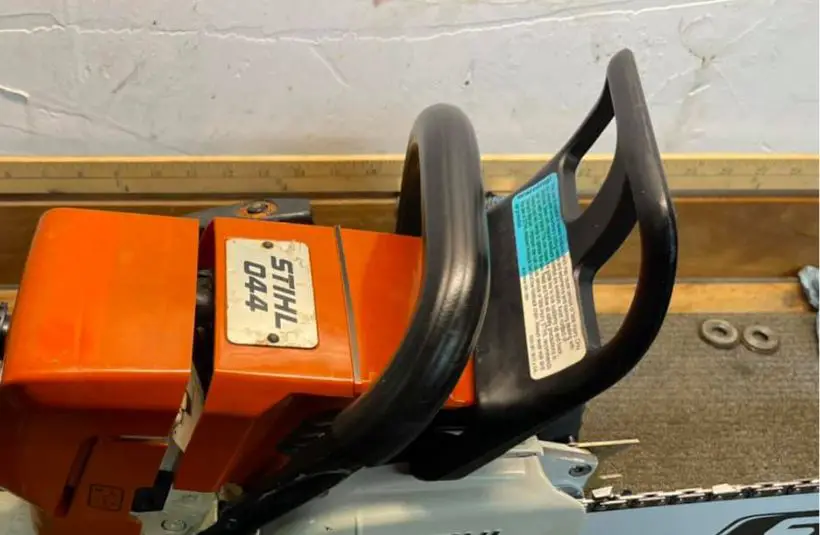
The front handle is where you place your hand to hold the chainsaw while cutting.
It also contains the chain brake, a safety feature designed to stop the chain from rotating in case of kickback (it’s when the top of the guide bar touches something and causes the saw to jerk back towards you).
It can be activated automatically (with a quick movement) or manually (by pushing the front hand guard forward).
Rear Handle
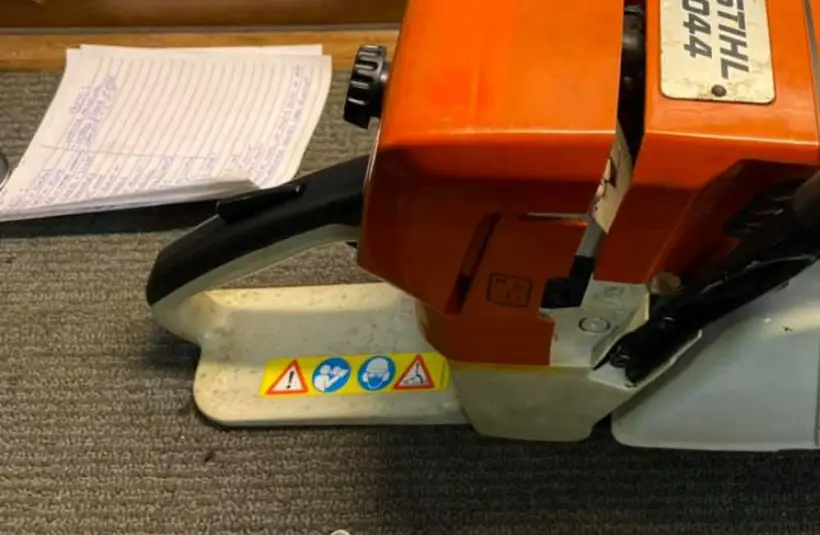
The rear handle is where you place your other hand while using a chainsaw. It also houses the throttle trigger and lockout.
Clutch
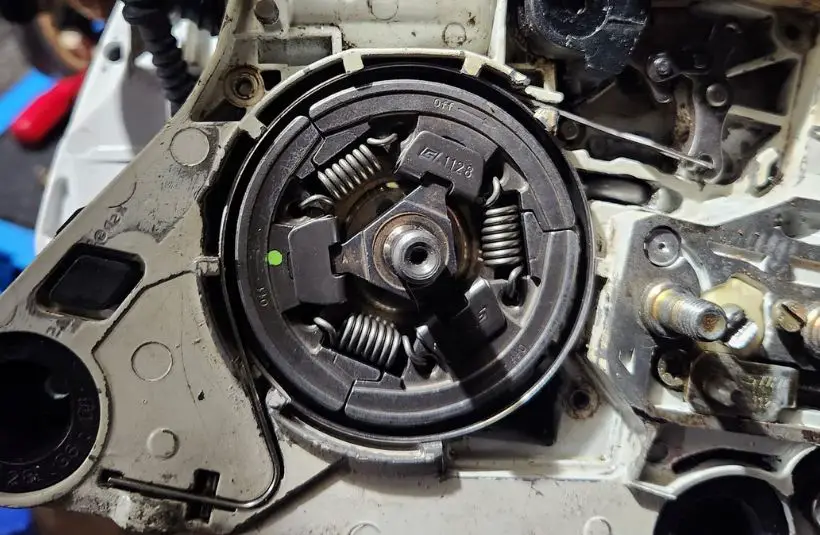
YES, that’s the clutch of your chainsaw right there!
Chainsaws use a centrifugal clutch that connects the engine to the chain
As the engine reaches a certain RPM, the clutch shoes (the connected metal pieces) slide outwards and engage with the drum or sprocket that drives the chain.
And, when the engine slows down, they retract and disengage from the drum.
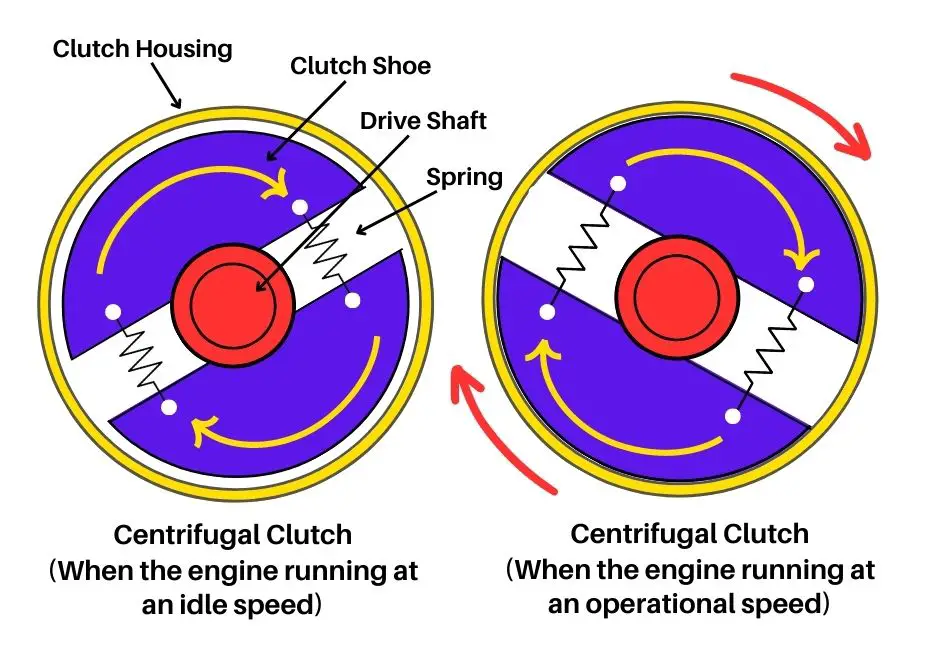
If you’re having a clutch issue then don’t forget to check out this article!
Flywheel
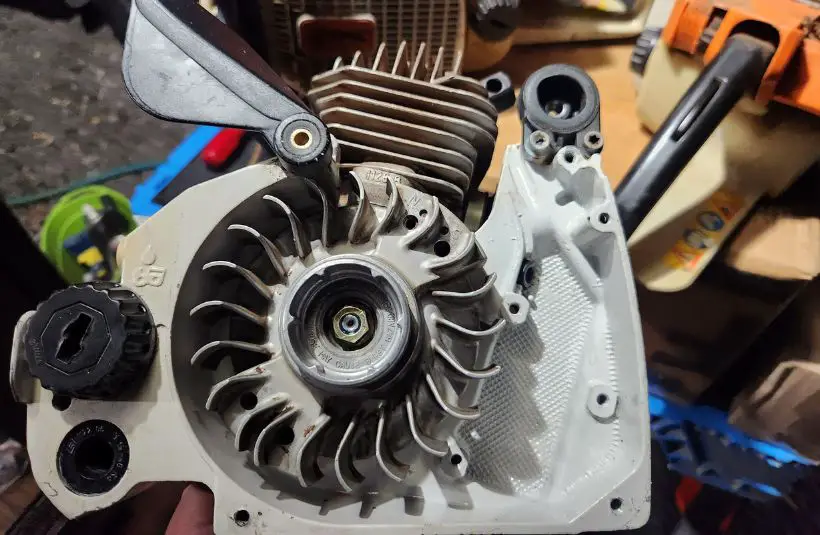
To be honest, the functionality of the flywheel is quite complicated and technical.
But in simple terms, it stores energy from the engine’s power strokes as “momentum” and releases it to keep the engine running smoothly.
Think of it as a spinning wheel (like on an exercise bike) that stores kinetic energy to keep you moving.
It also helps with starting the engine, providing a “kick” of momentum when needed.
Engine
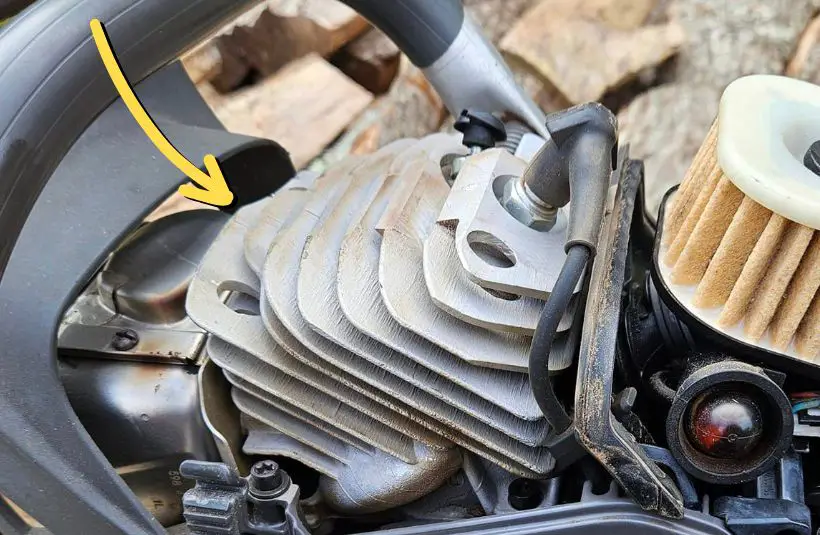
Now, let’s get to the heart of the chainsaw – the engine.
Modern chainsaws use a two-stroke engine. It’s simpler, lighter, and offers a better power-to-weight ratio than a four-stroke engine. It requires a mixture of oil and gasoline to operate.
Why is called “two-stroke” though?
Well, that’s because, unlike a four-stroke engine, it completes a power cycle in two strokes of the piston (up and down motion).
Here’s what it looks like on the inside:
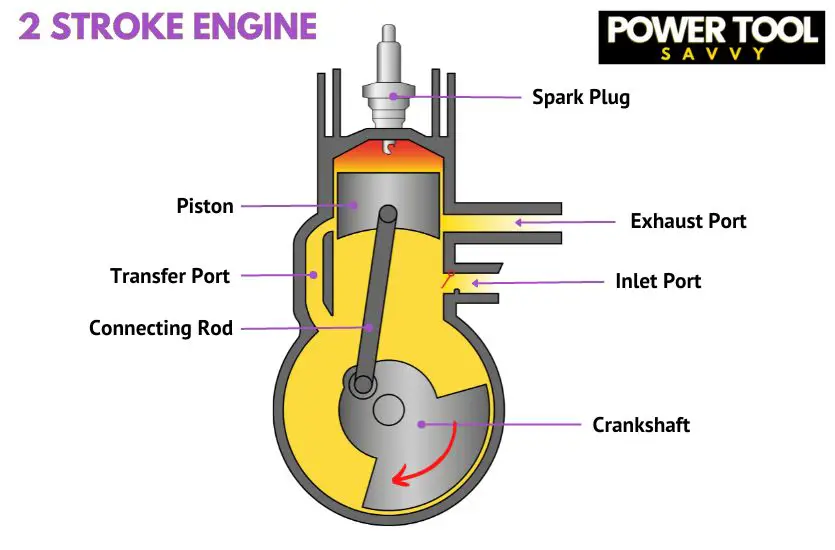
Read this article if you want to know why chainsaws use a two-stroke engine instead of a four-stroke!
Carburetor
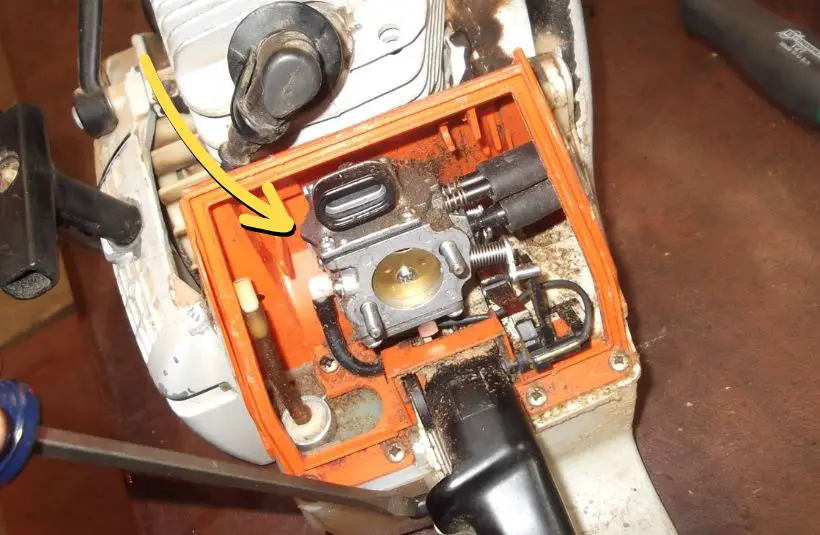
The carburetor is an important part of the engine that mixes air and fuel in the correct ratio for combustion. (Sorry for the bad lighting!)
You can adjust it by tweaking the screws (L, H) to make sure that your chainsaw is running at optimum performance.
Spark Plug
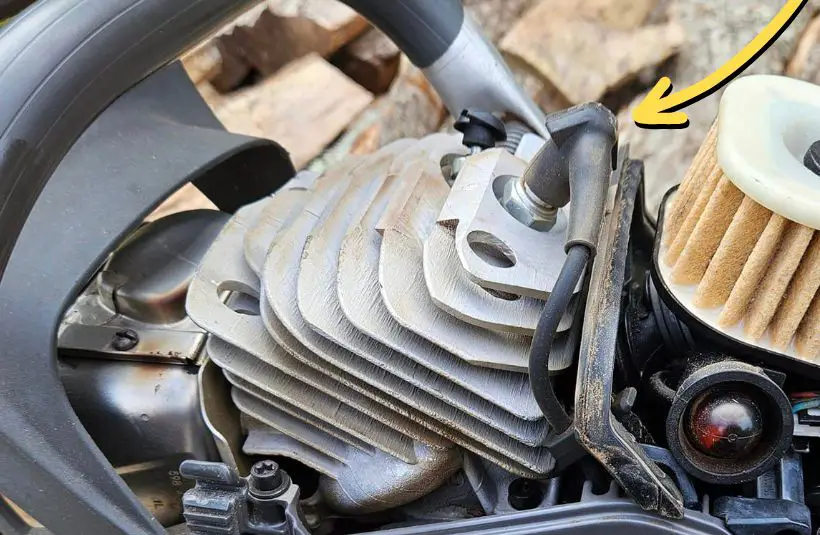
The spark plug is responsible for igniting the fuel and air mixture in the engine, creating combustion and power.
Manual Fuel Pump
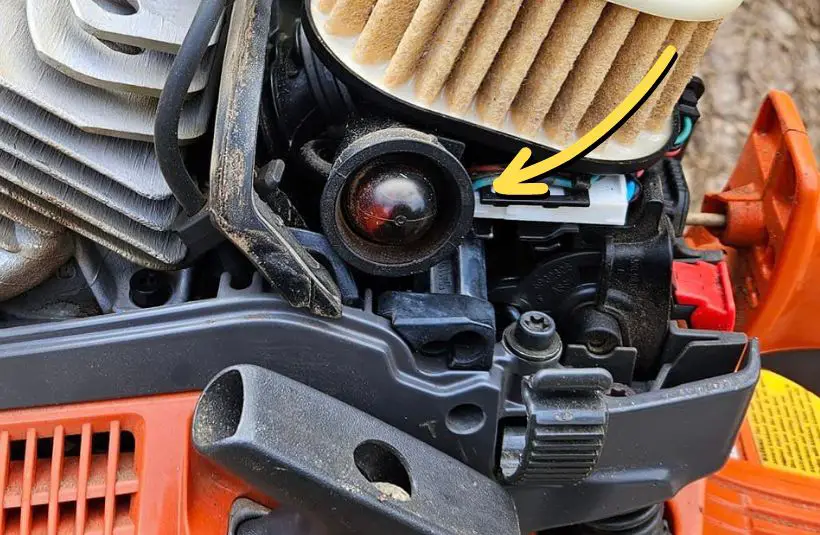
Some chainsaws come equipped with a manual fuel pump. It’s used to prime the carburetor before starting the engine, ensuring that there’s enough fuel for combustion.
Thus, it reduces the number of pulls needed to start the engine.
Simply press the bulb a few times before starting.
Decompression Valve
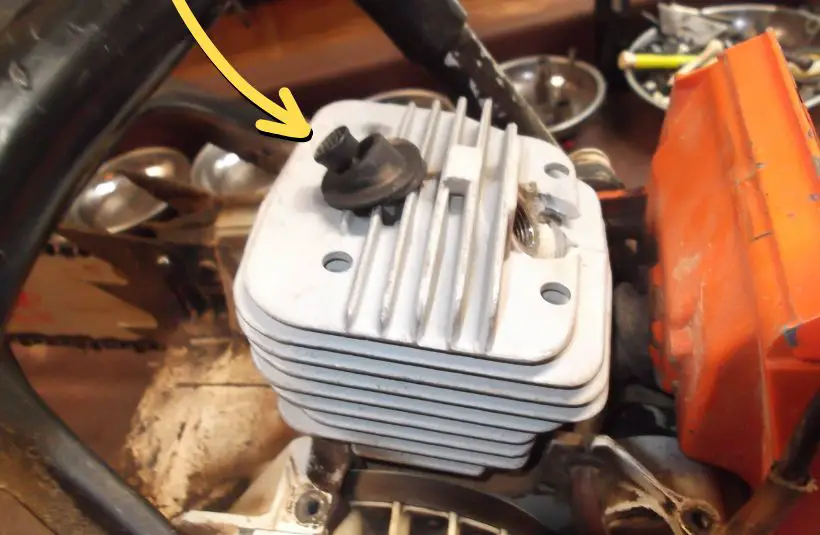
Low compression is bad for chainsaw engines.
But there are times when the compression gets so high that it becomes hard to pull the starter cord. And that’s where the decompression valve comes in.
It releases some of the compressed air from the cylinder, making it easier to start the engine.
Some saws come with this feature and you can usually find it on top of the cylinder head or near the spark plug as a button or lever.
For more info on chainsaw compression, check out this article.
So, that was almost everything about the parts of a chainsaw that you need to know.
If you have any more questions, feel free to ask in the comments below. I’ll be happy to help!
Happy sawing!

